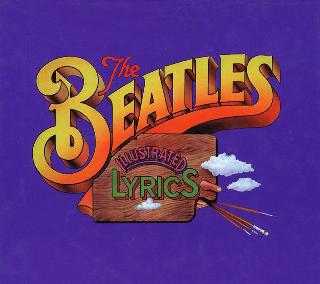Index
Home
Vorige
Honey Pie
Composer(s) : Lennon and McCartney
Year : 1968
Chords/Tabs: Honey Pie
Notes on "Honey Pie" (HP)
KEY G Major
METER 4/4
FORM Intro -> Verse -> Verse -> Bridge ->
Verse -> Verse (Instrumental) -> Verse (Instrumental) ->
Bridge -> Verse -> Verse (Instrumental) w/complete ending
GENERAL POINTS OF INTEREST
Style and Form
- You know I'm not a big fan of Paul's Olde Fashioned parodies, but I
admire this song for its craftsmanship and authenticity of detail
in virtually every department, right down to narrative fairy tale of
working girl to legend of the silver screen. The more familiar you
are with dance or show tunes of the Roaring 20s or from the very
primitive "talkie" films of the early 30s, the better you can appreciate
it. Yes, some of you may also associate it with Guy Lombardo, though to
be sure, his Royal Canadians of many a New Years Eve television broadcast
were themselves already exploiting it for nostalgia-inducing capabilities.
- The form is an extended variation on the standard two-bridge model, with
a lengthy intro, a triplet of verses between the bridges, and a pair of
verses at the end. Three of the many verse sections are predominantly
instrumental, suggestive of the little dance interludes you'd expect to
find in this stage-oriented genre.
- The use of an intro that is in a slower tempo and contains music and
lyrics not heard anywhere else in the song proper is a conspicuous
period detail. "Do You Want to Know a Secret"
is about the closest
the Beatles ever come to this on their own. In the close-but-no-cigar
category you have "Misery"
(slow, but exposes the song's title tag line),
and
"If I Fell"
(with unique content but securely within the same tempo
as the rest of the track).
Melody and Harmony
- The tune covers a broad range using a triadically jumpy style that
nicely showcases Paul's voice.
- A lavish number of chords not indigenous to the home key is used here
including bVI, minor iv in a Major key, and both secondary and "tertiary"
dominants (i.e. not just V-of-V, but also V-of-V-of-V).
Arrangement
- The backing track presents a parody of the corny stage band foxtrot
style that is authentically stylized to point of being surreal. Kudos
to George Martin.
- The vocal part is mastered tremblingly close-up to sound all the more
ingenuously sincere. Paul supplements the lead role with obligatto-like
commentary and scat singing in places, some of which is performed in
a shameless imitation of one Tiny Tim, who by no coincidence was enjoying
his own logical 15 minutes of fame around the time this album was in
production.
- Saxophones, playing in tight harmony near the top of their range,
appear for the first time as a lead in to the second verse. Through
most of the song, they provide either a background wash or an obligatto
reply to the lead vocal, but in the final verse they actually get to
play the tune. Clarinets, similarly, get their big moment in the
spotlight during the second bridge where they produce water sprays
in parallel 3rds.
- Other period details include the banjo-like rhythm guitar part, the
understated lead guitar licks, and the drumming that alternates between
soft brushes and hard syncopated cymbals slashes that are quickly dampened.
- The special recording effect used in the second phrase of the intro,
a cross between live performance sung through a megaphone and a well
worn 78 rpm record played on an acoustic gramophone, is almost as clever
as it is perhaps annoyingly obvious. Just keep in mind that for 1968,
this was something still technically adventurous.
SECTION-BY-SECTION WALKTHROUGH
Intro
- The intro is 12 measures long in an AAB pattern that is disguised by
the semi-spoken delivery of the second A phrase:
------------------------------ 2X -------------------------------
|e A |D |c |G |
ii V-of-V V iv I
|A |- |D |- |
V9 V
- The c minor chord creates the faint suggestion of a double cross relation
(E/Eb, C#/C) with the A Major chord of the first measure, even though one
complete measure separates the two.
- A particularly sentimental effect is created by the way in which the
vocal part adds a 9th to the A chord of the final phrase, especially
given the halting, rubato performance.
Verse
- The verse is 8 measures long, structured in 4 short phrases, the
last three of which use the same motif as a springboard:
|G |- |Eb |E nat. |
I: I bVI V-of-V-of-V
|A |D |G |Eb D |
V-of-V V I bVI V
- Within a relatively short stretch, we find the Eb chord cleverly
used to go "both ways;" as an upward-bound appoggiatura to E Major,
and as a downward-bound lead in to V.
- Measures 4 - 7 contain a four-step tiptoe through the circle of 5ths,
yet another harmonic cliche worth its weight in antique pop music
connotations.
- The tune forces a 7th on the A chord, and a 13th (relax, it's the same
thing as an added 6th) on the following D chord.
- The final measure of the verses which are followed by a bridge
section is modified so that a chromatic stream of F# -> F natural
bridges the gap between G (in measure 7) and e (in measure 1 of
the bridge).
Bridge
- The bridge is 8 measures long just like the verse, but in contrast,
its two phrases are longer:
Chords: |e |A |G |- |
Bass: |B |C# |D |- G A B |
vi6/4 V-of-V6/3 I6/4
Chords: |C |E |a |D |
Bass: |C |B |A |D |
IV V-of-ii6/4 ii V
- Paul's melodic bassline places many of the chords in this section in
inversions that have a precipitously high center of gravity. Contrast
it with the way the passage sounds if all the chords are played in root
position.
- Also note how the E Major chord of measure 6 is created by virtue
of an upward chromatic scale fragment running through the chords on
each side of it.
Ending
- The song has no outro per se. Rather, it comes to a halt where
the downbeat of the next verse would be, IF there were to be another
verse.
SOME FINAL THOUGHTS
- As with the rest of the Esher demos, the one for this song is interesting
interms of what it or omits with respect to the official version. Note
carefully that the version of the demo released on A3, while in admirable
sound quality, is woefully, and undocumentedly incomplete! Use your
"resources" to locate a complete pressing of this demo.
- While there are many tracks from the White Album that sound refreshingly
straightforward in their primitive demo versions, "Honey Pie" is one of
the rare exceptions where you recognize the contribution of the studio
production to the official version all the more clearly because of its
absence in the demo.
- In terms of the musical text itself, the demo lacks the intro, and
interestingly doubles up the instrumental section at the end rather
than in the middle.
- And some of the scat singing is motivated there by lyrics not yet
finished, rather than for purposes of special effect.
Regards,
Alan (awp@world.std.com)
---
"Oh for Pete's sake, it's only a joke." 062198#152
---
Copyright (c) 1998 by Alan W. Pollack
All Rights Reserved
This article may be reproduced, retransmitted, redistributed and
otherwise propagated at will, provided that this notice remains
intact and in place.
Ook op The Beatles [White Album]:
(c) 2024 Serge Girard


 (c) Alan Aldrigde, The Beatles Illustrated Lyrics
(c) Alan Aldrigde, The Beatles Illustrated Lyrics